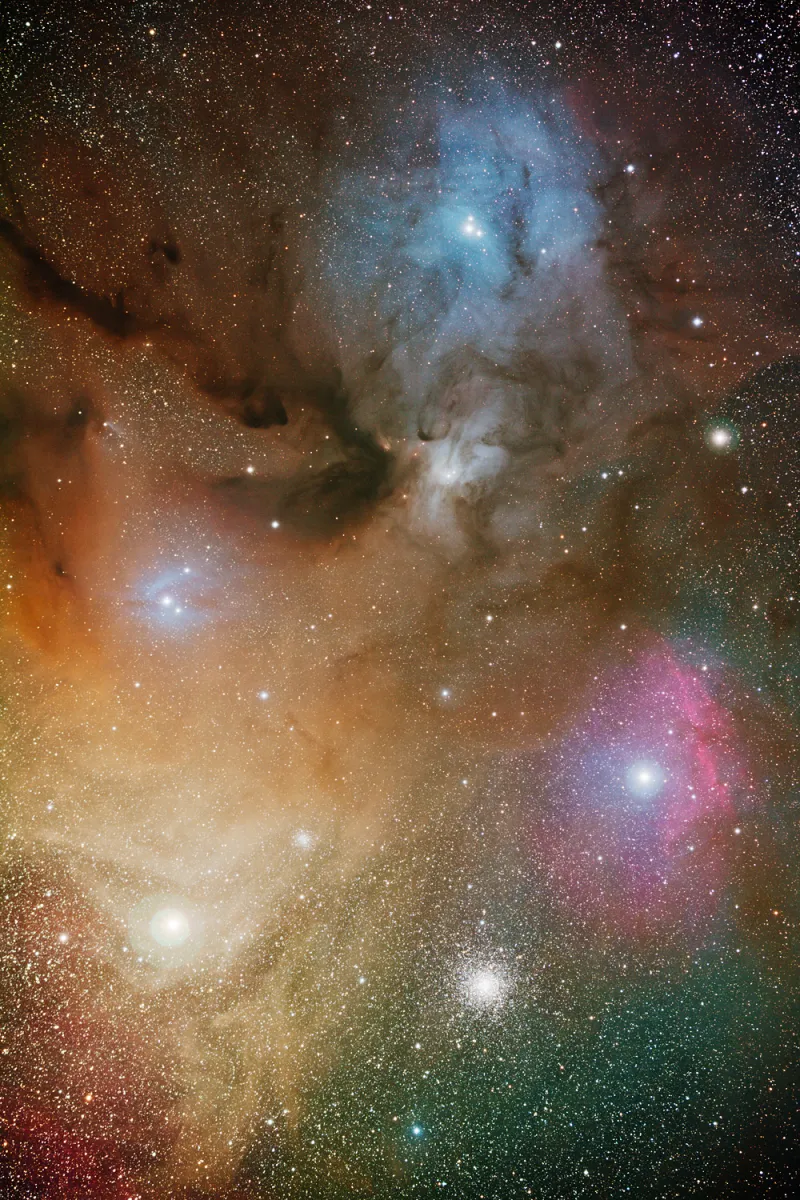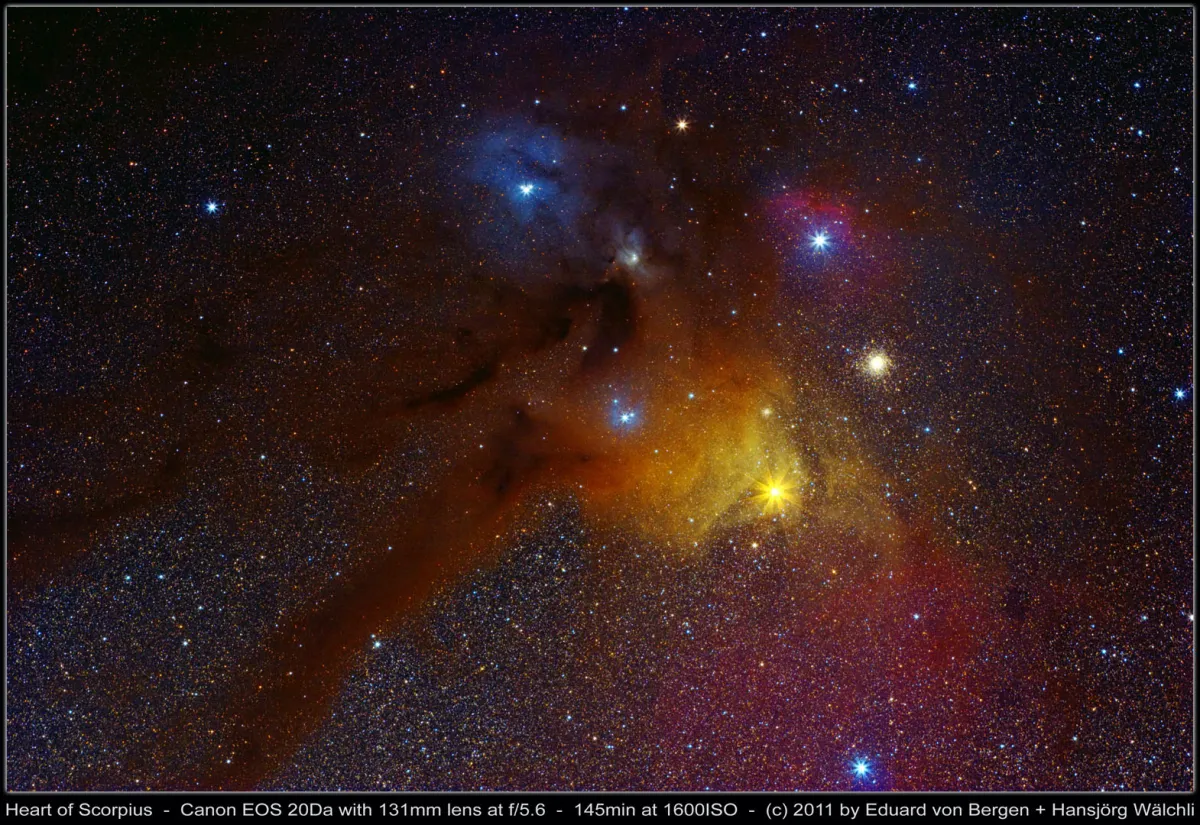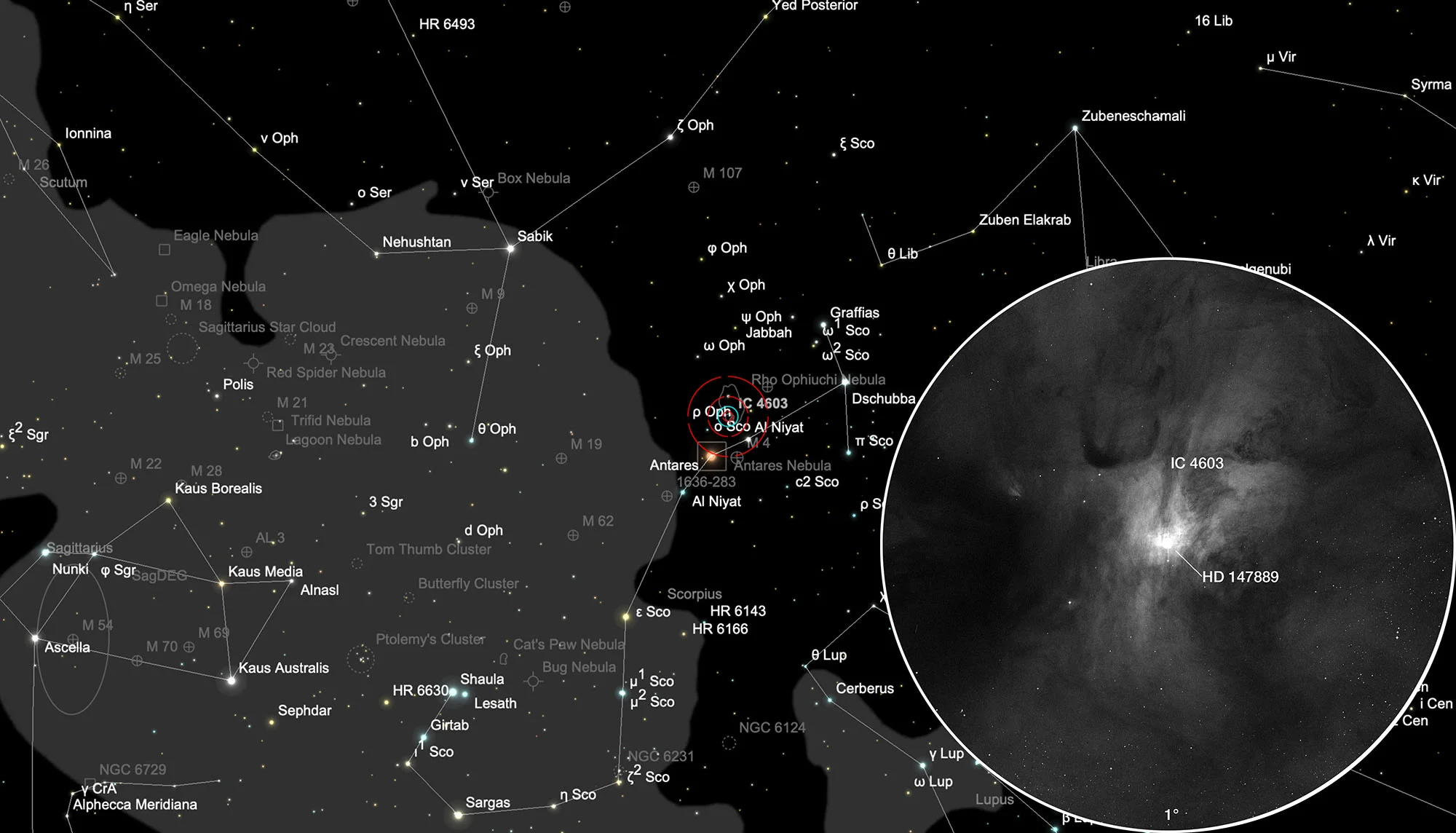Galactic Nebula IC 4603

History
American astronomer Edward Emerson Barnard visually discovered IC 4603, along with IC 4604, around 1883, probably with his 5-inch refractor. In his 1895 paper «On a great photographic nebula near Antares», he stated «for fully ten or twelve years I have known of a vast region of nebulosity in Scorpius near Antares. I tried a number of times to located this nebulosity, but could never definitely settle its extent and exact position. I first knew of its presence in my early comet seeking, having come across it repeatedly in my sweep.» In addition, he referred to a note made 15 June 1892: «A couple of years ago [at Lick Observatory] I found 2 stars involved in a very large diffused nebulosity. They are strongly nebulous in the 6.5-inch and in the 12-inch, but are best seen in the 6.5-inch. The stars are about 8.5 and 9.5 mag, the following star being the brighter. They are 1.8° north and 42' preceding Antares [apparently IC 4603]. This region and preceding it for some distance seems to consist of a vast but very diffused nebulosity.»
At Lick he took an image of region on 23 March 1895 with the 6" Willard lens at Lick Observatory. He noted: «The brighter and more complicated portions of the nebula centre about Rho Ophiuchi, 22 Scorpii and a couple of small stars occupying the centre of the equilateral triangle formed by Rho Oph, 22 and Sigma Scorpii.» [364]
Later in 1919 Barnard also recorded the dark nebulae B 42, B 44 and B 45 in this region. [239]
Physical Properties
The reflection nebula IC 4603 (LBN 1109) lies roughly in the centre of the large area of nebula called Ophiuchus Molecular Cloud, which spans an area of about 4.5° × 6.5°. This also includes IC 4604, IC 4605, the Antares nebula vdB 107, Sharpless 2-9 and many dark clouds. The open cluster in the centre is only visible in infrared light.

The Ophiuchus Molecular Cloud, also called Rho Ophiuchus Cloud, is an area with active star formation, which is one of the closest to us at a distance of only about 407 light years. X-ray and infrared observations revealed more than 300 young stars within the large cloud in the centre. The age of these stars is estimated to be only 300'000 years - very young compared to the oldest stars in the universe, which are more than twelve billion years old. [460]
| Designation | IC 4603 |
| Type | RN+* |
| Right Ascension (J2000.0) | 16h 25m 24.0s |
| Declination (J2000.0) | -24° 28' 00" |
| Diameter | 35 × 20 arcmin |
| Metric Distance | 0.120 kpc |
| Dreyer Description | eF, vL, dif, st inv |
| Identification, Remarks | LBN 1109; ESO 517-*N2; CED 131A |
Finder Chart
The nebula IC 4603 is located in the constellation Ophiuchus (Serpent Bearer) about one degree south of the 5 mag star ρ Ophiuchi, or about two degrees north of the bright star Antares (α Scorpii) in the constellation Scorpius (Scorpio). The best observation time is January to November.
